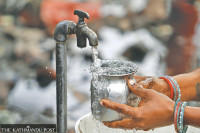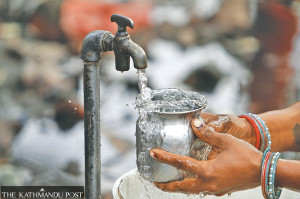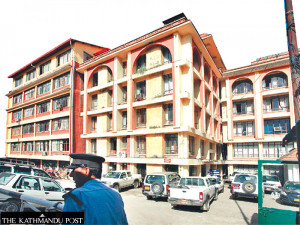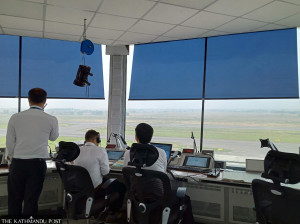Valley
Nepal yet to down phase dental amalgam
While more countries in the region are moving towards mercury-free dentistry, the highly-toxic metal still remains a standard material for cavity fillings in Nepal.
Chandan Kumar Mandal
While more countries in the region are moving towards mercury-free dentistry, the highly-toxic metal still remains a standard material for cavity fillings in Nepal.
Dental amalgam has been described as a dental filling material used to fill cavities caused by tooth decay. And it is a mixture of metals, consisting of 50 percent mercury and a powdered alloy composed of silver, tin, and copper.
Nepali dental professionals admit the use of dental amalgam could have adverse effects on human health and environment.
“Mercury amalgam is still being used in Nepal for cavity fillings. However, the rate of its use has certainly come down,” said Dr Sudin Shakya, former president of Nepal Dental Association (NDA). “Countries around the world are moving towards mercury-free dentistry, so we should adopt a similar practice.”
Dental amalgam is no longer in use in Norway and Sweden, while it is being phased out in Japan, Finland and the Netherlands. Closer home, Bangladesh is set to phase out its use in 2018, and in India, there is a dental school requirement of eliminating amalgam in favour of alternatives.
According to the United Nations Environment Programme (UNEP), the use of mercury in cavity fillings accounts for nearly 10 percent of global mercury consumption, making dentistry sector among the largest users of mercury in the world. The UNEP estimates the global consumption of toxic mercury at between 300-400 metric tons per year.
Mercury has been for as long as 150 years around the world. Dental amalgam is prepared with mercury, silver and other elements. Fillings made with amalgam also are known as ‘silver fillings’.
However, it is the mercury that binds all other ingredients together, making it a preferred option among the dentists.
“Mercury amalgam is a very reliable for cavity fillings with high longevity. When it is mixed with silver amalgam, it becomes strong combination,” said Dr Manoj Humagain, general secretary of NDA. “However, it often courts controversy as it is highly toxic.”
In March 2013, the Ministry of Health had imposed a ban on import, purchase and use of mercury-based equipment in order to make health care service mercury-free.
But the decision, made at a secretary level without mentioning ‘dental amalgam’, has failed to discourage the use of mercury in cavity fillings, according to environmentalists.
“Often times, doctors wouldn’t inform patients about mercury that would enter their mouth. A non-toxic alternative to do away with mercury,” said Ram Charitra Sah, environmental scientist and executive director with the Center for Public Health and Environmental Development (CEPHED). Calling for a stricter regulation, he said: “It should be published in Nepal Gazette.”
The existing Minamata Convention on Mercury, a global treaty that aims to protect human and the environment from effects of mercury, requires each signatory country to phase down the use of dental amalgam. Already a signatory to the convention, Nepal is preparing to ratify it.
Exposure to mercury has adverse impacts on human health like memory loss, anxiety, hormonal disorder and mood swings. A mercury bio-monitoring study conducted recently by CEPHED detected high levels of mercury in 50 Nepali dentists and dental assistants.
Other studies have also found mercury in bodies of pregnant women, fishing communities and metal plating workers. The US Environmental Protection Agency (EPA) has set 1ppm as the health advisory level of mercury.
“Use of mercury in cavity fillings is not so rampant these days compared to the past. Private clinics have almost stopped the practice, and patients have started inquiring about dental amalgam. They have options now,” said Humagain. “Nepal has already signed the treaty on phasing out the use of mercury products. Now, we have reduced its consumption that will ultimately lead to phase down of mercury.”
Public health experts, however, insist that more needs to be done yet on this front. They argue that dentist’s current curricula at Nepali medical colleges should be revised as it “emphasises on mercury filling over other alternative ways of tooth-filling”.
“Curricula at dental schools should be changed and dentists should be trained in their early days to go for safe alternatives. Those students also have to prepared dental amalgam for practical test,” added Sah.
Dr Humagain assured that country’s dental schools were gradually revising their curricula. “Curriculum revision is under way. The Kathmandu University has already done it.
However, we cannot wipe out everything about mercury amalgam as students should at least have knowledge about it,” he said.




 22.12°C Kathmandu
22.12°C Kathmandu














